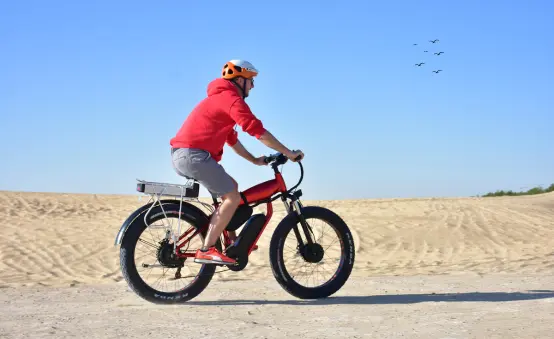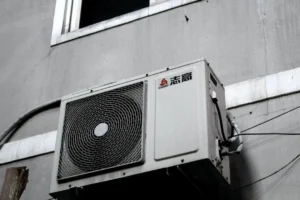Choosing the right electric ride isn’t just about getting from point A to point B, it’s about finding a ride that fits your entire lifestyle. Whether you’re zipping through city traffic, taking scenic weekend detours, or exploring rough off-road trails, versatility matters. With so many models and features out there, picking the best one can feel overwhelming. That’s where this guide comes in.
We’ll break down what to look for in a truly all-purpose electric ride, so you can cruise comfortably, ride smarter, and make the most of every journey, no matter where the road (or trail) takes you.
Understanding Your Primary Use Cases
Before diving into specific features, you’ll need to honestly assess how you plan to use your electric ride. Different usage patterns demand vastly different capabilities and design priorities.
Urban Commuting Needs
City riding requires smooth operation on paved surfaces, easy navigation through traffic, and practical portability features. Your electric ride for commuting should handle stop-and-go traffic patterns while offering sufficient range for daily round trips.
When it comes to addressing the particular needs of Canadian urban riders, especially in cities like Toronto, Vancouver, and Montreal, where weather extremes and longer commuting distances are common, happyrun canada has developed models specifically suited to these challenges.
By focusing on improved durability, extended range, and cold-weather reliability, the brand ensures a smoother, more dependable ride tailored to Canada’s demanding urban environments.
Weekend Off-Road Adventures
Trail riding demands rugged terrain capability, robust suspension systems, and appropriate tire configurations. Your off-road electric bike needs sufficient ground clearance and power to handle steep inclines, loose surfaces, and unexpected obstacles.
Durability and power requirements increase dramatically for off-road use. Motors need higher torque ratings, frames require stronger construction, and components must withstand dirt, moisture, and impact stress.
Hybrid Lifestyles
Many riders need one vehicle that seamlessly transitions between urban streets and weekend trails. This presents the greatest challenge in choosing an electric bike for all terrains, as compromises become inevitable.
Flexibility and adaptability considerations include adjustable suspension settings, removable accessories, and tire options that work reasonably well on both surfaces.
Key Features to Look for in a Versatile Electric Ride
Understanding core technical specifications helps you identify truly capable multi-terrain vehicles. These features separate marketing claims from real-world performance.
Motor Power and Torque
Wattage ratings tell only part of the story in real-world scenarios. A 750W mid-drive motor often outperforms a 1000W hub motor on hills due to better torque delivery and gear integration.
Torque specifications matter more for climbing steep inclines and navigating challenging trails. Look for motors delivering at least 50-80 Nm of torque for serious versatility.
Battery Life and Range
Minimum range requirements differ dramatically between commuting and trail use. The entry of traditional bicycle giants like Trek, Specialized, and Cannondale into the cargo e-bike market highlights their growing mainstream appeal. This shift underscores the recognition of their potential to transform everyday transportation.
Removable batteries offer significant advantages over permanently mounted systems. You can charge at work, carry spares for extended rides, and store batteries indoors during winter months.
Tire Type and Suspension
Fat tires provide better traction and shock absorption but increase rolling resistance on pavement. Slim tires roll efficiently on roads but struggle with loose surfaces and provide less comfort.
Front suspension improves comfort and control, while full suspension systems handle rough terrain better but add weight and complexity. Consider your primary usage when weighing these trade-offs.
Frame Material and Design
Foldable frames excel in portability for commuters who need to store bikes in small spaces or combine cycling with public transit. However, folding mechanisms add weight and potential failure points.
Strong aluminum or steel construction suits off-road demands better than lightweight carbon fiber, which can crack under impact stress.
Comparing Common Electric Ride Types
Different electric vehicle categories excel in specific scenarios. Understanding these strengths helps narrow your selection process.
E-Bikes
Traditional e-bikes offer the best combination of versatility, range, and fitness benefits. They handle both commuting and recreational riding well, though specialized models perform better in specific conditions.
Best electric bicycles 2023 models increasingly blur the lines between categories, offering adjustable features that adapt to different riding conditions.
Electric Scooters
Scooters excel at short urban commutes and light off-roading but lack the range and terrain capability of e-bikes. They’re more portable but less versatile overall.
Electric Skateboards and Longboards
These appeal to niche users seeking urban mobility with a skateboarding feel. They’re impractical for serious commuting or off-road use.
Electric ATVs and Dirt Bikes
Purpose-built off-road vehicles excel on trails but aren’t street-legal in most areas. They represent the opposite extreme from commuter-focused designs.
Terrain Compatibility: What to Match with What
Surface types directly influence tire width and suspension requirements. Smooth pavement favors narrow, high-pressure tires, while loose dirt needs wider, knobby treads.
Climatic conditions affect battery performance and component durability. Cold weather reduces range, while heat can damage electronics. Look for IPX4 or higher waterproof ratings.
Battery performance varies significantly across different environments. Hills, headwinds, and frequent stops drain batteries faster than ideal conditions suggest.
Budget Considerations and Long-Term Value
Price ranges for versatile electric bike options span from $1,500 to $5,000+. Higher prices don’t always guarantee better versatility – sometimes you’re paying for specialized features you won’t use.
Maintenance needs increase with complexity and usage intensity. Off-road riding requires more frequent cleaning, lubrication, and component replacement than pure commuting.
Warranty coverage and local service availability matter more than initial price. A cheaper bike becomes expensive if you can’t get it serviced locally.
Final Tips for Making the Right Choice
Test rides reveal more than specifications ever can. Try different models in various conditions before deciding. Pay attention to comfort, handling, and intuitive controls.
Brand reputation and service network availability affect long-term satisfaction. Established companies typically offer better parts availability and technical support.
Accessory compatibility for both commuting and off-roading extends your bike’s versatility. Look for mounting points for racks, fenders, lights, and other practical additions.
Making Your Move Toward Electric Versatility
A truly versatile electric ride should adapt to your needs, whether you’re commuting to work, cruising around town, or heading off the beaten path. By focusing on key features like battery range, comfort, terrain handling, and build quality, you can find a ride that keeps up with your everyday and weekend adventures.
Don’t rush the decision: test rides, research, and knowing your goals can make all the difference. The right choice isn’t just about performance; it’s about freedom, ease, and fun. Pick smart, and you’ll be ready to roll, anywhere the road or trail leads.
Common Questions About Versatile Electric Rides
Can one electric bike really handle both daily commuting and serious off-road trails effectively?
Modern versatile e-bikes can handle both, though compromises exist. Mid-range models with adjustable features offer the best balance for dual-purpose use.
What’s the minimum motor power needed for climbing steep hills during commutes and off-road riding?
Look for at least 500W nominal power with 50+ Nm torque. Mid-drive motors typically outperform hub motors on steep inclines.
How much should I expect to spend on a quality versatile electric bike?
Quality versatile e-bikes typically range from $2,000-$4,000. Cheaper options often sacrifice durability while expensive models include specialized features most riders don’t need.
Also Read-How Oral Care Kits Support Daily Hygiene










